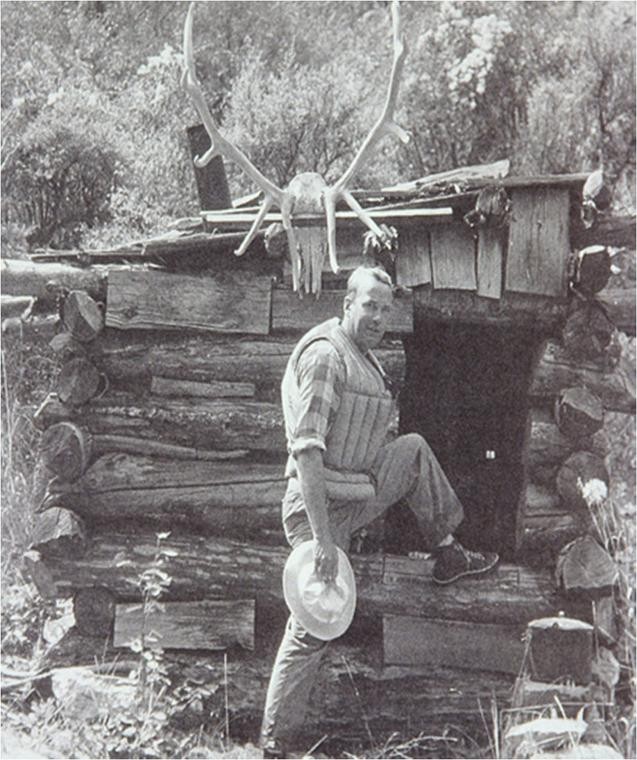Salmon-Challis National Forest staff and volunteers this month are preserving the Lower Parrott Cabin at the confluence of Nugget Creek and the Middle Fork Salmon River within the Frank Church River of No Return Wilderness.
The Lower Parrott Cabin is a small log cabin built around 1917 by Earl King Parrott, who was known as the hermit of Impassable Canyon. The project will stabilize the cabin so Middle Fork visitors can better enjoy the site, according to Amy Baumer, forest public affairs officer. The river cobble foundation will be fixed and several deteriorating sill logs will be replaced. In addition, purlins and roof shakes will be reinstalled following the original design of the cabin.
Parrott’s life symbolizes wilderness living and his lower cabin is a popular stop for visitors wishing to embrace the wilderness experience, Baumer said.
Johnny Carey and Cort Conley, in their book “The Middle Fork and the Sheepeater War,” describe Parrott as “intelligent and industrious,” but also “stubborn, aloof and lacking in humor.” Parrott spent 30 years living a solitary existence in the Middle Fork country panning for gold, hunting, trapping and growing fruits and vegetables. He would make an annual trip to Shoup for supplies including salt, matches, tea and bullets for his .30-30 Winchester. Most of the time, he lived in a cabin dugout several thousand feet above the river where he had an extensive garden. A series of ladders and ropes provided access up the steep canyon walls to his main residence, Baumer said.
His lower cabin sits next to the Middle Fork. While floating the Middle Fork in 1936, the Hatch-Swain-Frazier Expedition reported “a small log structure” and “a tiny shed” just past Nugget Creek.
“Inside the small, crude shed the men saw cornmeal, a frying pan and plate, a gold pan and blanket.” An entry in Charles Kelly’s diary at the time notes “Parrott’s cabin on the river is very small but weather tight. Looks like a boar’s nest.”
Parrott died in 1944 and is buried in the Salmon Cemetery. Parrott’s upper cabin burned in a forest fire in the late 1980s, leaving the lower cabin the only surviving architectural feature associated with him in the wilderness.
The Central Idaho Wilderness Act of 1980 requires identification and management of cultural resources including historic cabins in wilderness, Baumer said. The cabin was identified in the historic preservation plan for the wilderness as a good candidate for preservation. Because of its location in the wilderness, non-motorized and non-mechanized methods will be employed on the project.
Tim Canaday, Salmon-Challis National Forest archaeologist, said, “Without a willing cadre of volunteers, preservation projects such as this are nearly impossible to accomplish.” Joe Gallagher of Heritage Preservation Resources Inc. volunteered to lead the effort. Volunteers have supplied materials including replacement logs. Personnel, materials and supplies will be transported to the site via raft.
“The Salmon-Challis National Forest is fortunate to have partners such as Heritage Preservation Resources, the Backcountry Horsemen of Idaho and the Heritage Action Team; which is composed of Middle Fork outfitters and guides, forest staff, the public and the Shoshone-Bannock Tribes, to help us with our wilderness work,” Forest Supervisor Chuck Mark said.
An interpretive brochure describing the history of the cabin and the preservation activities will be prepared after the project is complete.



